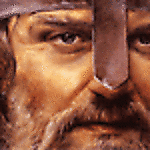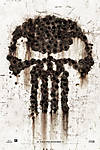Folks:
Hope I'm not too late to join the "what-if" fray!
I have created a "back-story" and have designed an armored personnel carrier / urban assault vehicle based on the venerable Panzer IV (D - don't get too much more venerable than that!) to fill in behind the great "history" provided by Ben de Groot in previous posts this campaign (and many thanks, Ben, for letting me piggy-back on your story!).
Here we GO! I'll provide my back-story below, followed by a concept-picture to show something like what's about to happen, and a ad-dated "kits and supplies" pic showing my ingredients.


The “Back-Story” lurking behind my “what-if” build of the Sd.Kfz. 288 Sturm-TransportPanzer (Assault personnel carrier) IV Ausf D, aka “Der Becker-Igel” or “Becker's Hedgehog”:
To All: I am basing my scenario shamelessly and wholly on that provided by Benjamin de Groot, who has crafted the most delicious and compelling description of a resurgent Germany acting as part of a post-war western-nations coalition caught up in a new war with those evil-empire Reds and friends, in Anno Domini 1947. And let faux-history be told!
In the autumn of 1947 the Coalition of United Free Nations launched an assault on the city of Warsaw and the area surrounding it. Codenamed ˝Outlaw˝, the operation was one of many envisioned to help establish a favorable defensive line for the winter of 1947-48. Tasked with securing the northern outskirts of the town were elements of the former Brigade Feldherrnhalle. Its depleted ranks were filled with a mix of convalescent veterans and mediocrely trained recruits, but it was not enough to bring it up to its full complement, with strength returns indicating that roughly 65% of the division was available. Of these, about 55% was sufficiently armed. The division was found lacking in heavy weapons and artillery support, but received a lot of new AFVs. Most notable among these deliveries were the new Sd.Kfz. 285/2 E10 ausf. B and Sd.Kfz. 284 E25 ausf. A, of which much was expected. In order to supply an adequate amount of infantry for operations, 5. Fallschirmjäger Regiment was organically attached. This more or less thrown together mix of Wehrmacht and Luftwaffe troops formed what would become known as Kampfgruppe Feldherrnhalle. On October 3rd, 1947, Kampfgruppe Feldherrnhalle –deemed to be as unfit for a full-scale assault as it had been at the signing of the 1945 ceasefire – began its assault on the northern districts of the city of Warsaw.
Those who had deemed Kg. Feldherrnhalle to be unfit found, by that they were sadly mostly right. The assault, combining new and mostly untried armor with infantry only meagerly equipped with mobile fire-power and few support vehicles, rapidly bogged-down in the city. Bloody block-by-block fighting ensued where the close quarters strongly favored defenders holed up in buildings and behind rubble barricades, and the poorly-supported E10 and E25 vehicles, intended for defeating tank armor, proved to be vulnerable to enemy infantry and of little value against rubble piles and brick and steel high-rise buildings. Losses of men and vehicles rapidly mounted, and the assault forces were pulled back to re-group and re-equip.
In truth, what had happened was a bit of “jumping the gun”: Coalition commanders had sensed an opportunity and leaped in at the earliest chance. There had been some who had counseled patience, as re-equipping the German forces was a work-in-progress still far from complete. The Germans, based on lots of prior inner-city warfare experience, recognized the value of armored fire-support vehicles to provide cover and support for infantry in urban combat, but development of these things had been mostly put aside in favor of other new vehicle production – in particular the new “standard-panzer” and assault-gun/waffentrager designs. A new infantry support vehicle suddenly gained greater urgency following the events in Warsaw in 1947. But no designs for any heavily-armed “street-brawler” support vehicle had been fully-developed, and no such vehicle was ready for production....
Into this breach stepped Col. Alfred Becker, commander of the fabled “Bau-Kommando-Becker” and the man responsible for the innovative conversion of numerous old French tanks into anti-tank “Marders” and SPG. Becker, an imaginative engineer with a long established reputation for making the most of meager resources to help fill German vehicle needs, stepped up to once again work his peculiar magic to create the needed vehicle from “what was available”.
Becker and his Bau-Kommando rushed east. Upon reaching East Prussia, Becker was given a former tractor-assembly plant, provided access to a variety of older equipment and “less-strategically-valuable” weapons, and directed to “create an effective armored infantry vehicle without delay”. The baseline prescription was for a full-tracked vehicle capable of providing “substantial” fire-support and having a flexible ability to transport assault troop, supplies, and / or smaller crew-served weapons.
Becker was offered “his choice” of several older Panzer IV tanks – mostly old “fahrschule” hulks and damaged tanks pulled out of rear-area repair depots. For weapons, Becker was offered a few dozen Sd.Kfz 222 armored car “hanglafette” turrets, “any number” of MG-42, and a box-car full of the odd-but-powerful Raketenwerfer 43 “puppchen”. To complete the “ingredients”, Becker was allocated a supply of 15mm steel plate and assorted bits and pieces. With the clock ticking, Becker and his “boys” set to work with the arc-welder. Becker's creation was the Sd.Kfz. 288. Formally labeled the “Sturm-TransportPanzer”, Becker's ugly, slab-sided monster, fondly called the "Becker-Igel" or Becker's Hedgehog, by the troops, proved to be a marked success in the second assault on Warsaw, providing substantial close-in fire-support and versatile motility for German assault troops as they moved in to defeat and drive from the city the defending Stalingrad forces.
The concept of "Becker" opportunistically using older Pz III and Pz IV chassis would go logically with both real Becker history and with the anticipated shift towards production of other AFV lines to replace the old Panzer IV "war-horses", had Germany carried on past 1945. I surmise that the old Pz. IV would be pulled back when possible and used as second-line vehicles and relegated to other uses.
But a rebuilding Germany would have to prioritize its limited AFV factories, and many generals still fondly believed in their SdKfz 251 series half-tracks, even though these were under-powered, were typically under-gunned for urban war, and suffered serious cross-barricade limitations, due to having non-driven front wheels. likely the standard-panzer gun-tanks and tank-destroyers would get the nod, and desired, but heretofore less-well-understood, new-fangled "street-brawlers" would get little production support.
Becker would have been "just the guy" to fix this by going his demonstrated "improv" way. He would have been offered old panzers and modest material support in the way of old weapons, repair-depot hulks and thin plate steel. Knowing that his task was to make something which could bring fire-power into a close-in street fight, and being aware that this vehicle would need to cope with both enemy armor and infantry, Becker would be looking for ways to make his brawler both "fierce" and a street survivor. Within the limits of what was available, he had arguably successfully met substantial challenges before with his converted SPG in France, and he would creatively rise to this challenge, too.
So... Big turrets (heavy, no advantage in the city fight), with big AT guns (big, heavy, crew-served, and anyway not available to him) are OUT. He doesn't have any heavy armor (nor means to handle this), and in any case, the Brummbar already exists for those missions. He needs to think "auto weapons" and light anti-armor... He will be offered only "non-strategic " stuff like old SdKfz 222 turrets. Also, if he can use them, panzer-schrecks and panzerfaust and infantry mortars. But "Real" guns... nope. The Wehrmacht needs those elsewhere. One other thing may well have been available; the Racketwerfer 43. This odd little weapon is truly cheap, easy to use, and very effective for close-in AT and bunker-busting purposes... The generals don't much value it, though, as it has a rather limited range and accuracy, so... "Herr Oberst Becker, these can be yours!".
As a design note, Becker will, in this “history”, use spaced-armor to save weight while gaining resistance to the ever-popular shaped-charge anti-tank weapons becoming common by 1947.
Old - but - still-running Panzer IV, 2cm auto cannon, MG, and Racketenwerfers, plus a pile of thin plate, old tank bits, and his trusty arc-welder. What more could Bau-Kommando Becker ask for?
MY build:
This be the Sd.Kfz. 288. The chassis is a CyberHobby Pz.IV D hull and tracks (yes, I did mean Becker would get OLD tanks), the body will be scratch-built from 0.010 and 0.015 styrene sheet, the SdKfz 222 hanglafette turret will be from either an old Tamiya -222 kit, or an old Dragon SdKfz 250/9 recon track kit, and the Raketenwerfer will be provided from a Dragon Raketenwerfer kit. Kits are in my start-up pic.
This build will depict the base vehicle as used in one of its popular “alternative” modes in the second Warsaw assault; with a 2cm Flak 38 (or maybe a 3cm Flak 103/38 Jaboschreck) positioned in the troop/cargo compartment for added “oompf”. I am NOT planning any specific crew or any dio at this time – Hey, I'll consider myself lucky to get this thing done by May!
Herr Becker and I will commence presently!
Bob

The Sd.Kfz. 288 concept picture:

And here are the ingredients... the Pz. hull is partially assembled, wheels ready to paint, track-runs glued and ready to paint. All else- body, turret, raketenwerfer and mount, and the flak-gun, remain to be built. Good luck to me!


Give me a green light, and I'll be buildin'!



































